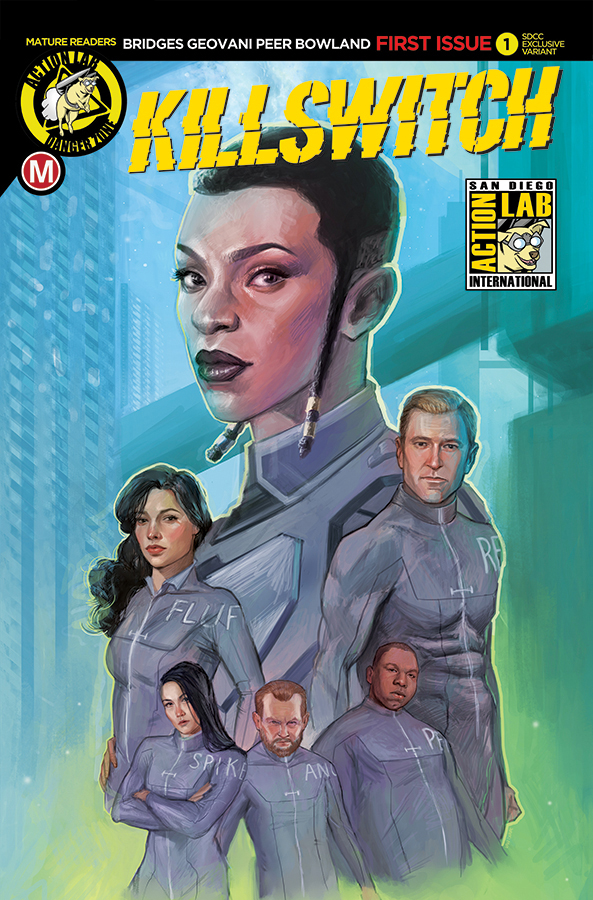
- Killswitch #1
- Action Lab Danger Zone
- Written by Tilly & Susan Bridges
- Art by Walter Geovani
- Colors by Brittany Peer
- Letters by Simon Bowland
- Cover A by Natasha Alterici
- Cover B by Sozomaika
- SDCC Exclusive/Trade Cover by Diana Van Damme
- Logo by Dylan Todd/Big Red Robot
- Available October 02, 2019
In a future in which clairvoyant Augurs are used for their powers but feared, held captive, and persecuted, a disaffected military major is shocked into action by the grim realities of their treatment and puts her life and career on the line to help them attempt a daring escape from captivity. Blade Runner meets Fury Road.
Augurs. Prescient people “gifted” with glimpses of the future.
If you, or someone you love, displays any of the signs of these precognitive abilities, it’s your civic duty… no, it is your moral obligation… to report them to the authorities immediately. To do any less would undermine and endanger all that we’ve struggled to gain as a civilization. Under the careful watch of authorized personnel, augurs are vital to our security. Left on their own and without qualified supervision, their knowledge is potentially dangerous to our very way of life.
Major Marcella Regula, a bona fide hero of the United Liberation Front, understands this simple fact better than anyone. When her brother showed the signs, she turned him in without hesitation or remorse. After all, once reported augurs are swept away to specialized internment compounds where their abilities are harnessed and all of their needs met.
Of course, you and I have read enough cyberpunk and science fiction in general to understand that this is a bunch of hogs wallop. Propaganda fed to the masses to keep them content is the staple of all dystopian sci fi. It’s allegory, used in literature to shine a revealing light on the injustices we see & mostly ignore every day, for the sake of our continued intake of vanilla spiced lattes. This familiarity may breed complacency or dismissal in some, but the one thing we can’t ignore is how effective it can be as a plot device, leading characters face first into a moral quandary.
Such is the way with Major Marcella Regula. She’s had the Kool-Aid™, and it was delicious. Along with her dedication to a life of military service, it’s gotten her to a position where she could play a role among the power players of society- the Council of Augurs. Here, she’ll see exactly what happens to those “gifted” souls who have been called upon to safeguard all of society’s freedoms and privileges.
Sure, Killswitch may sound like a familiar story. Within the first couple of pages, I was making the inevitable comparisons to Minority Report. But moving past that, there’s a different angle being taken by Susan & Tilly Bridges. In Minority Report (talking about the movie because to my shame I haven’t read the Philip K. Dick version), the precogs had no real awareness of the outside world apart from the horrors they’re witness to through their visions of murder & mayhem. In the world of Killswitch, the augurs are people who have been snatched away from friends and family, dehumanized for the very powers that the government is more than happy to benefit from (think of the X-Men in a world where the Mutant Registration Act is passed and happily embraced by all). Further, the main character in other stories may have been an augur themselves, or maybe an average citizen whose life is altered in some way by their precognitive intervention. The Bridges have taken a familiar concept and shifted that perspective. Marcella Regula isn’t a bystander carried along by random events. She’s an active participant, a true believer in every sense of the word. With that in mind, her character arc should be more difficult for her to follow, and much more dramatic in its execution. There are some jumps in the narrative, change ups that led me to believe I might have missed some subtext, but there was a lot of information to deliver in this issue. That Susan & Tilly Bridges had to trim away some excess to keep the story tight and on target for publication would be expected. As a matter of fact, as I’m writing I’ve realized that this may be a case where the writing ideal of “show, don’t tell” may have left me wanting just a little more exposition…
Visually, there are always high expectations for a good cyberpunk actioner. To that end, the team of Walter Geovani & Brittany Peer has their work cut out for them. The world we’re introduced to in Killswitch carries much of the expected DNA of the great-grandfather of all things cyberpunk, Blade Runner– or Do Androids Dream of Electric Sheep to the purists. The backgrounds are jam packed, with all of the obligatory neon signs and surveillance drones readers could possibly hope for. Between you and me, I don’t know how artists like Geovani & Peer do it. Geovani’s work is extremely detailed and he’s going to be kept busy as he gives his characters a variety of looks, a fact that works out well in a heavily populated setting. As to Peer’s colors, that’s a whole other level of work to be managed. The aforementioned backgrounds are full of lighting effects and the smoky residue of pollution. The one problem I had was that in a possible attempt to accentuate the drabness of this future, there’s a singular reliance on a blue/gray palette. It works for the most part, but some of the characters tend to blend together, especially in those crowded backgrounds. There’s just a lot for an artistic team to keep track of, but overall I think they managed.
As an introduction into a dismal future, Killswitch has a lot of promise… which is great because there are some really big shoes to fill out there (two of which have been mentioned in this review, and are both written by Phillip K. Dick). The sub-genre of science fiction known as cyberpunk has been around long enough to carry its own built in pitfalls. What was once seen as revolutionary or subversive is now familiar. My hope is that with introductions made and certain facts established, everyone will be able to take a breath and slow things down a bit. This is a story that has a lot to say, so it’s just going to come down to the creative team to be able to settle in and tell it.
Final Score: 10/13
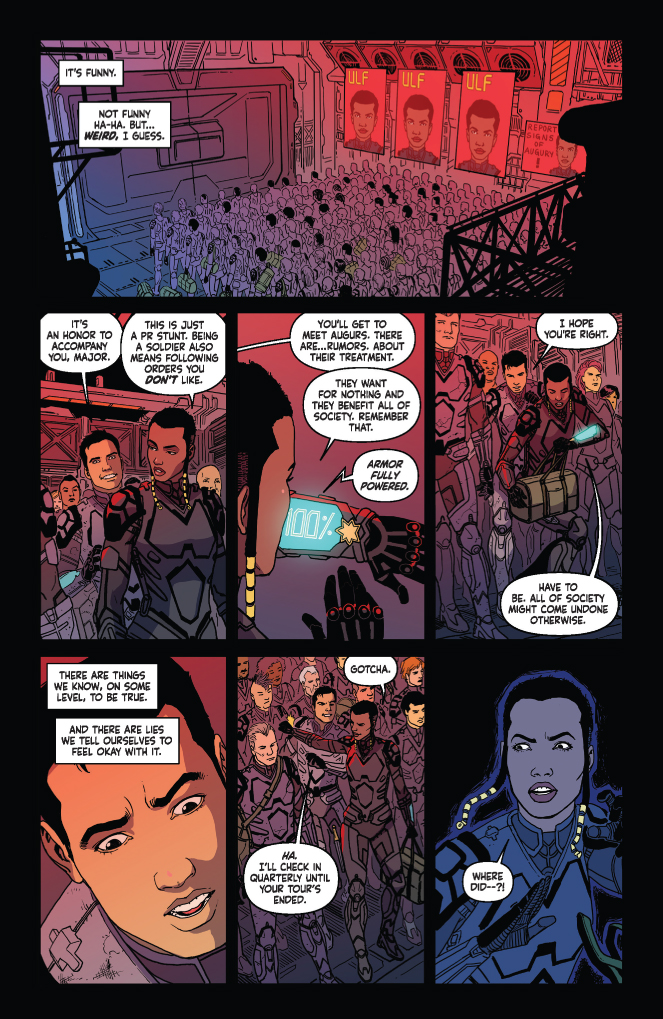
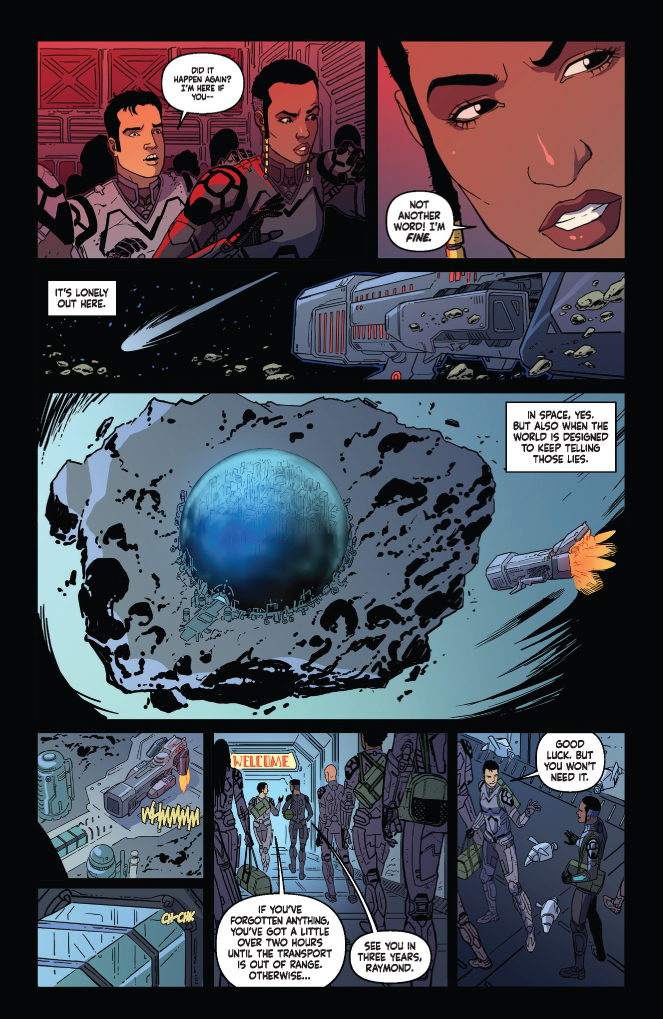
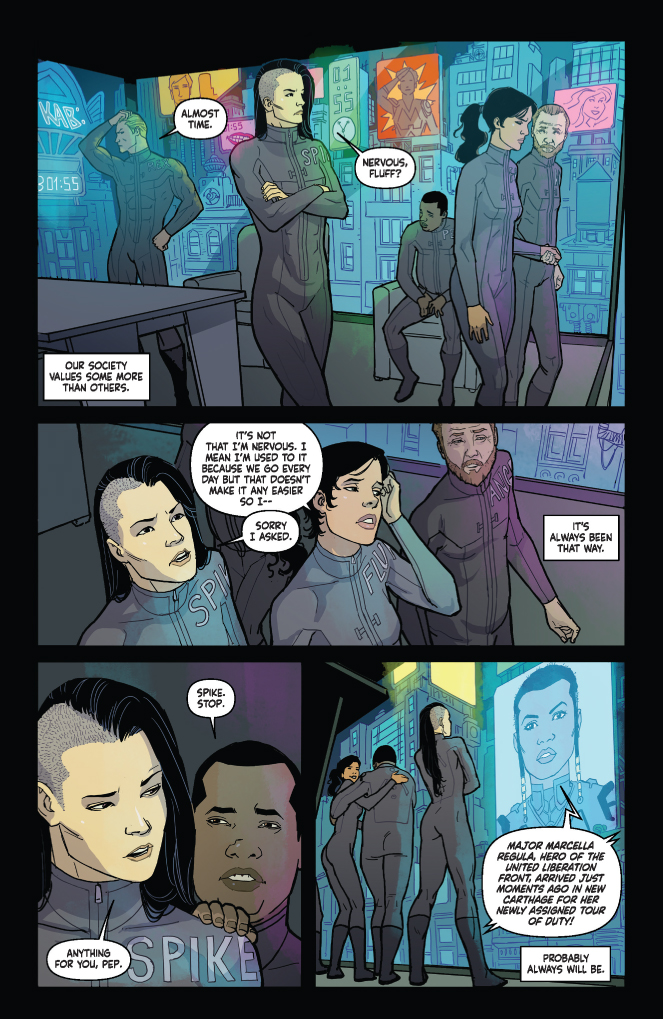
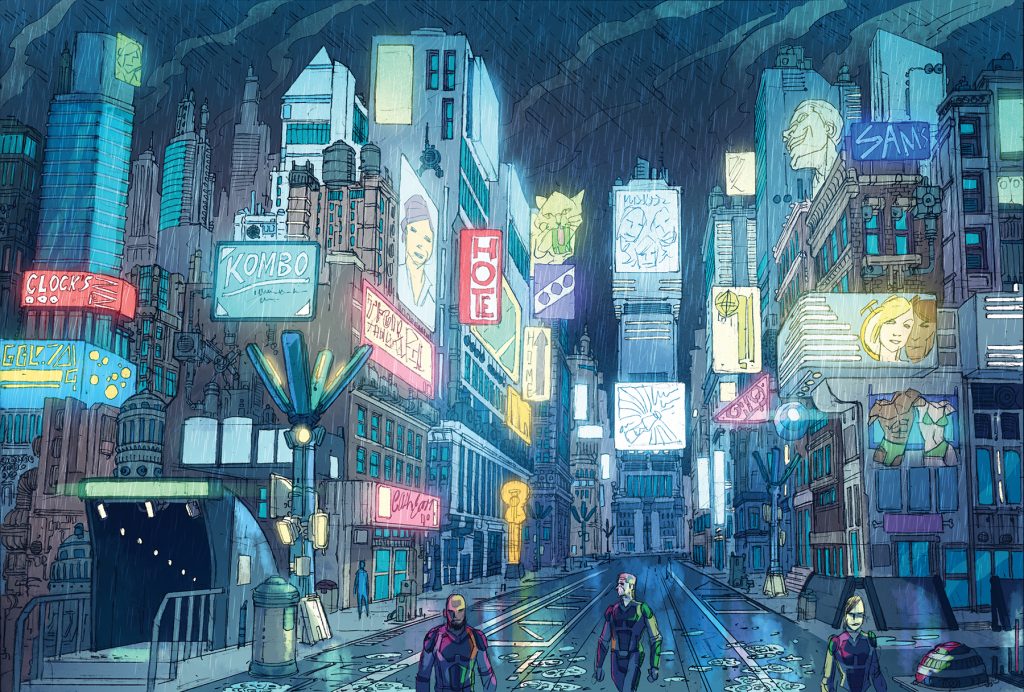
1 Comment
Add a Comment